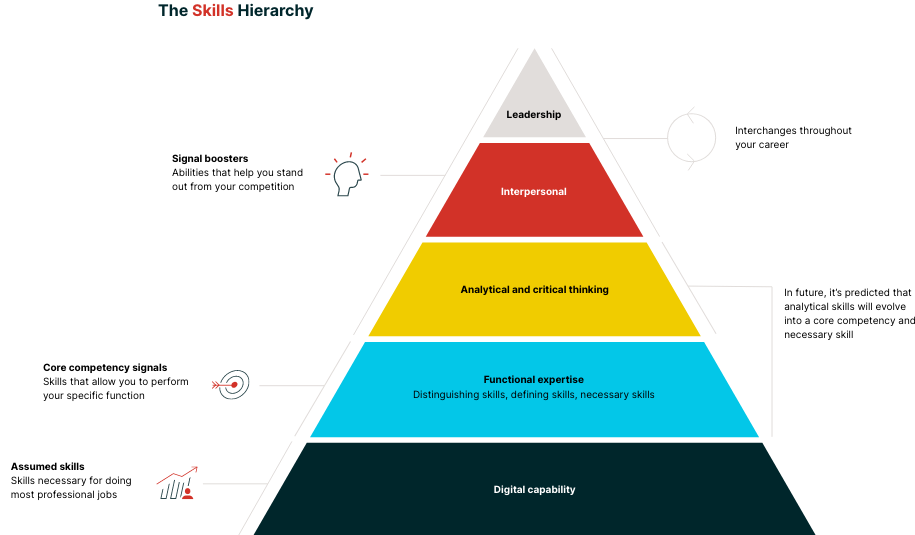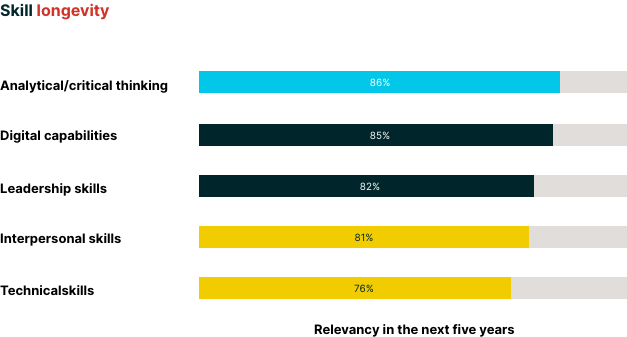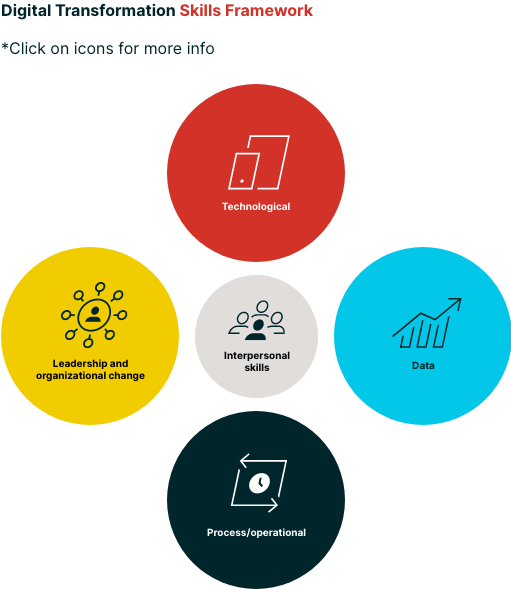The most critical social imperative for any business today is diversity, equity, and inclusion (DEI). Just ask any recruiter: 49% of those recently surveyed said that jobs seekers do inquire about DEI initiatives. What is more, 44% of all surveyed recruiters reported that some of the candidates they had been in contact with had either turned down an interview offer or a job offer — all of this because of a lack of diversity within the organization.1
The key to enhancing DEI starts with improved hiring initiatives — it does, however, go beyond that, too. To embed DEI into your company’s culture, you need to weave DEI into the very organizational fabric of your business. Meaning, you need to get everyone on board, from new hires to the C-suite executives; staff at all levels must be able to recognize the importance of the DEI initiatives and to understand what strategies and initiatives are being developed.
This is where learning and development (L&D) comes in — from offering more obvious interventions, like running DEI training programs, to putting in place less apparent actions, such as considering a range of voices, ideas, and needs when designing training programs. L&D plays a key role in starting and maintaining a culture that promotes diversity, equity, and inclusion.
DEI in the workplace
Before discussing how your organization can promote DEI, and so that your company can go beyond treating these concepts simply as boxes to be ticked, let’s first define each one of them.
Diversity
Look around your workspace, be it a shared office space or a virtual one: Does every single one of your colleagues come from the same ethnic background? Do you all share the same gender identity? Do you all eat the same meal for lunch? Most probably not. And that’s a good thing, because the more different your life experiences, even the smallest ones, the more effective your team may be at collaborating and coming up with innovative ideas. And, perhaps even more importantly, the more understanding your business will be of the diverse realities and needs of your customers and clients.
Diversity as a concept is based on the understanding that each individual, because of how different they are from all other individuals, is uniquely valuable and has the means, and the required background, to bring a fresh and different perspective to the table. Diversity can be one of race, ethnicity, gender, and sexual orientation, as well as socioeconomic status, age, physical abilities, religious beliefs, political beliefs, and other ideologies.2
Promoting diversity within the workplace is more than just tolerating each other’s differences — it requires us to challenge each other and to view everyone’s individual differences as enriching. It also offers everyone the chance to explore these differences in a safe, positive, and nurturing way.
Equity
It’s tempting to think that in order to be fair, we should offer everyone exactly the same opportunities in terms of hiring, training, and promotions. But is it really equitable to offer the exact same opportunities for development, for example, to an employee from a privileged background — educational, social, financial — and who may have had an easier start in life, than to someone from a historically disadvantaged and underrepresented one, who may, for instance, have struggled to pay for their studies, or who may not have had the same support system growing up?
While equity is often referred to when discussing pay, it goes beyond compensation. It’s about ensuring fair treatment of all by providing each employee with proportional access to opportunities.3
Rather than asking leaders to treat everyone the same, organizations that promote equity and an equitable workplace should encourage and expect leaders to identify everyone’s specific professional needs and take these into account when making decisions.4
Inclusion
It’s one thing to have a diverse workforce, and another to give everyone a voice at the table and offer them a safe and accessible space to contribute ideas and raise concerns. And so, inclusion, in a way, is diversity in action.
When successfully applied, a culture of inclusion removes all barriers, discrimination, and intolerance, and promotes an environment in which everyone is made to feel included, heard, and supported.5 In the workplace, inclusion is often the result of efforts that encourage and respect the participation and contribution of all employees. Within an inclusive work environment, we don’t pretend that everyone is the same — rather, we celebrate our differences and allow them to enrich our work by giving everyone the opportunity to voice their ideas.6
10 ways L&D managers can boost DEI
It is one thing to understand what DEI is and to grasp its importance; it’s another to actually put those insights into action, because it means having to turn DEI into a business function.
Below is a list of 10 actions L&D professionals and their teams can take to help their organization make that transition.
- Emphasize the business case for diversity and inclusion
When workplace teams reflect the social makeup of their target customers, they’re more than twice as likely to innovate effectively for their consumers.7 For this very reason, L&D managers must first and foremost emphasize this very business case to leadership, and later collaborate with other departments to develop cohesive plans that link DEI with metrics that matter to business outcomes. Once everyone is on board with these plans, L&D will then help set up appropriate initiatives and programs to follow through.8 - Work with a chief diversity officer
In recent years, many organizations have hired chief diversity officers (CDOs) — in other words, DEI specialists — to oversee DEI initiatives, and to support L&D teams in their efforts. Alternatively, CDOs are also well equipped in helping L&D managers ensure that their DEI goals, strategies, and practical interventions are aligned.Alternatively, some organizations prefer to hire DEI consultants instead. DEI consultants can assist L&D teams in identifying DEI issues at a micro and macro level, and help create training content that addresses these.9 - Ensure support across the organization
To create a sustainable DEI culture, everyone within an organization must be on board. The process starts with the leadership team, who will need to model goals and outcomes — and align them with business goals — and demonstrate active support for them.10The L&D team can then align their training goals to those of the leadership team’s. This will allow L&D to identify learning gaps in DEI for both the leadership team and the company employees. - Provide inclusive leadership and bias training
Bias occurs in the workplace either consciously or subconsciously through choices or assumptions made when hiring staff, delegating tasks, or comparing employees in other ways.11 In order to embed DEI across the organization, executives need adequate DEI training to better understand what inclusive and unbiased leadership looks like. At the same time, HR leaders and their teams should also undergo training so that they too can become aware of any potential bias when working with job applicants and employees, at both onboarding and reviewing stages.12 - Conduct DEI training across the company
Once the L&D team has aligned their DEI needs and goals with the company goals and the CDO or DEI consultant, they’re finally ready to conduct focused and relevant training programs that work toward achieving their unique DEI goals.For DEI training to be most effective, it shouldn’t be sporadic or responsive — rather, it should be proactive and embedded in all learning content and experiences, even when not specifically discussing DEI topics.13Bear in mind that learning about diversity, while sitting with a group of homogeneous colleagues, is understandably less effective than interacting with people from diverse backgrounds. For this reason, it’s important to create diverse training groups across the board, promoting inclusivity regardless of the learning topic.14 - Rethink your learning formats and make learning accessible
It’s not just the content of your training programs that fosters inclusion; format has a role to play here, too. Traditional in-person or virtual classroom settings can be very useful, but make sure to consider also whether peer exchanges, roundtables, collaboration hubs, or fireside chats might suit the subject matter better and create more effective learning opportunities.15Moreover, bear in mind the specific circumstances of your employees and how training formats, and the environment in which they take place, can ensure that all individuals and their accessibility needs are included. It means ensuring that venues are accessible to all, but also, and not exclusively, offering the flexibility of online training to remote or hybrid staff. - Diversify your candidate training pool
Diverse training groups require a diverse workforce, which first and foremost starts with having access to a diverse pool of hiring candidates. In other words, your organization will need to improve their hiring initiatives, and to do so they will need to take steps to remove unconscious bias when hiring new employees and nurturing existing ones.16It may be that candidates in your industry tend to be from one particular group. If that’s the case, your best option could be to set up a train-to-hire program. Such programs have proved to be very useful in imparting vital, job-ready skills to people from different fields and backgrounds, and in helping organizations attract and hire a more diverse workforce. Note that an effective train-to-hire program considers candidates’ experience, learning preferences, mentorship, and the need for constant improvement moving forward.17 - Use tech to remove unconscious bias from the hiring process
Business leaders are increasingly using new technologies to create safe, open, and inclusive workspaces. For example, artificial intelligence (AI) could help your organization to eliminate bias during the hiring process by removing subjective judgment from the initial application-review process. For example, an AI program could be asked to extract from application documents job-relevant data only, thus avoiding human bias based on background or gender identity.18 - Train and collaborate with mentors
All professionals can benefit from a mentorship program. This is especially true of those individuals who come from historically underrepresented and underserved communities, and who may not have had the same social and professional support their colleagues may have received. Mentors must, therefore, give more than advice; they should also advocate for their mentees’ advocacy from the mentor.19 Similarly, L&D’s work can go beyond merely matching mentors to staff, and instead can also consist of providing guidance to both the employee and the mentor around accountability and growth. - Track impact and report results
Progress in DEI will bring positive impact and necessary transformation to organizations, but constant advocacy and accountability will be vital to the initiatives maintaining momentum. L&D managers can boost support and investment for these initiatives by drawing up KPIs, monitoring progress, and reporting on the positive results to leaders – making sure that DEI is more than a box-ticking exercise.
Ready to start your organization on the DEI journey?
Learn how edX For Business can help you turn DEI dialogue into action through innovative L&D solutions.
Accelerate the workforce of the future, with edX
Whether you’re a business leader, L&D executive, or other professional, we offer compelling data and insights for why an outcomes-based skills program is key to succeeding in tomorrow’s workplace.























